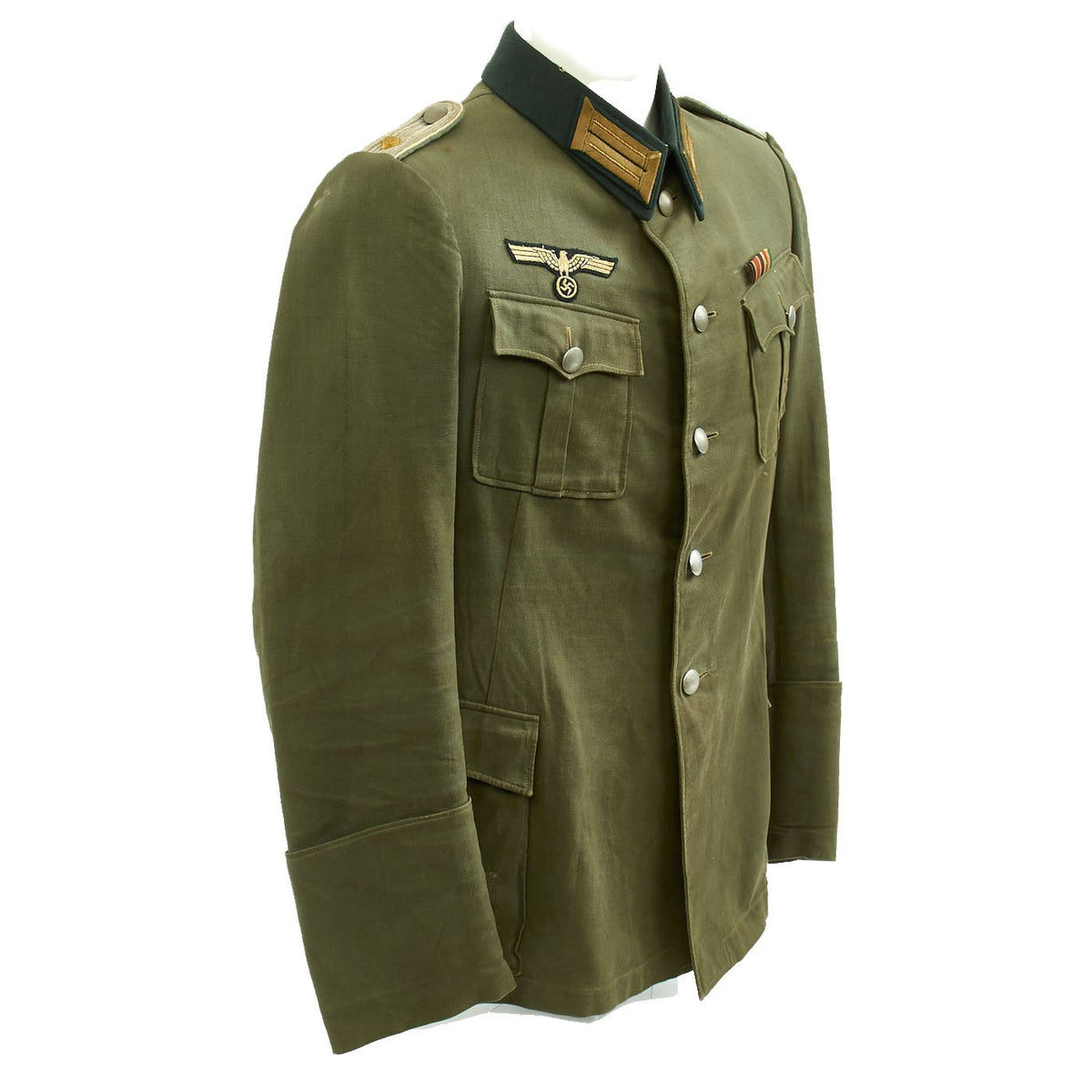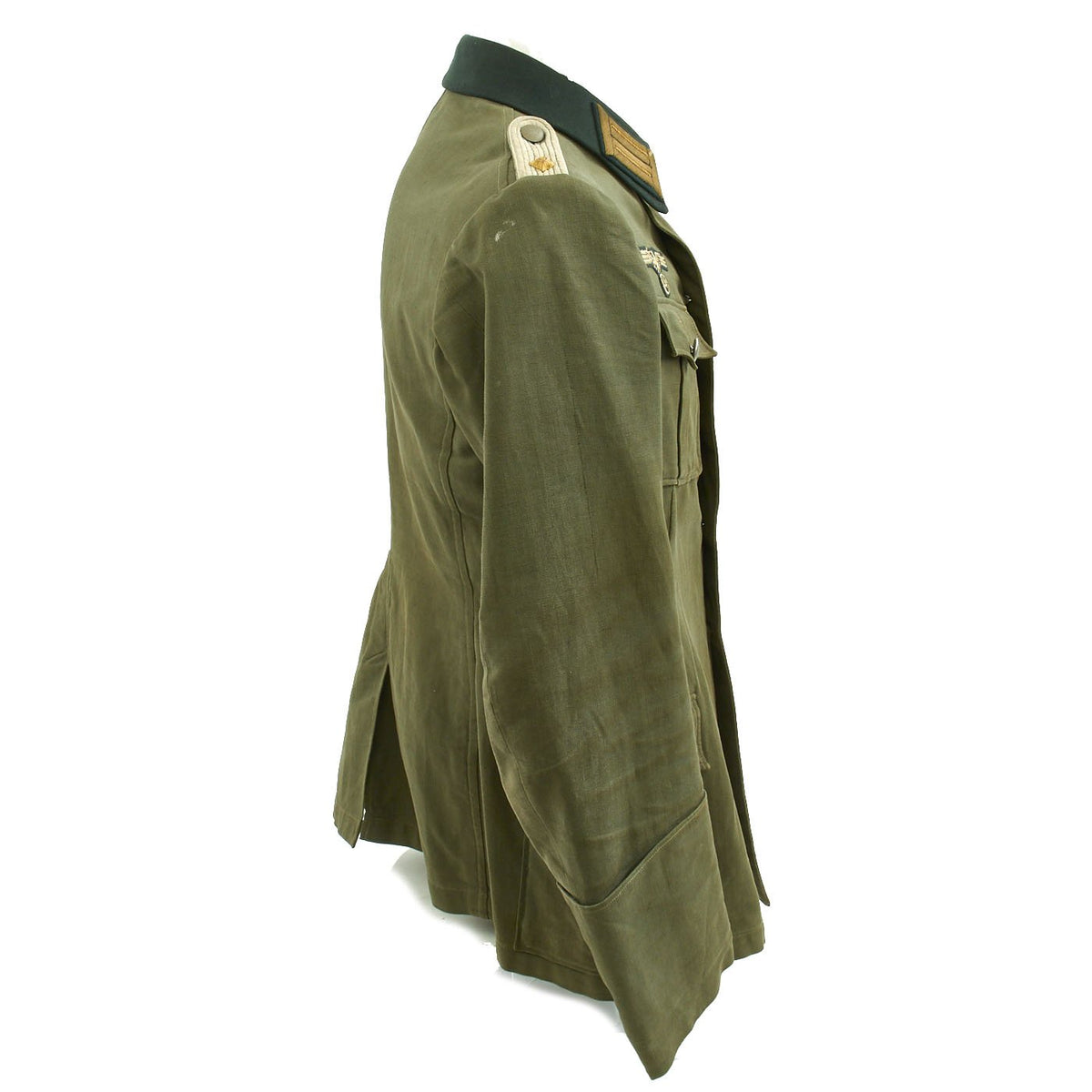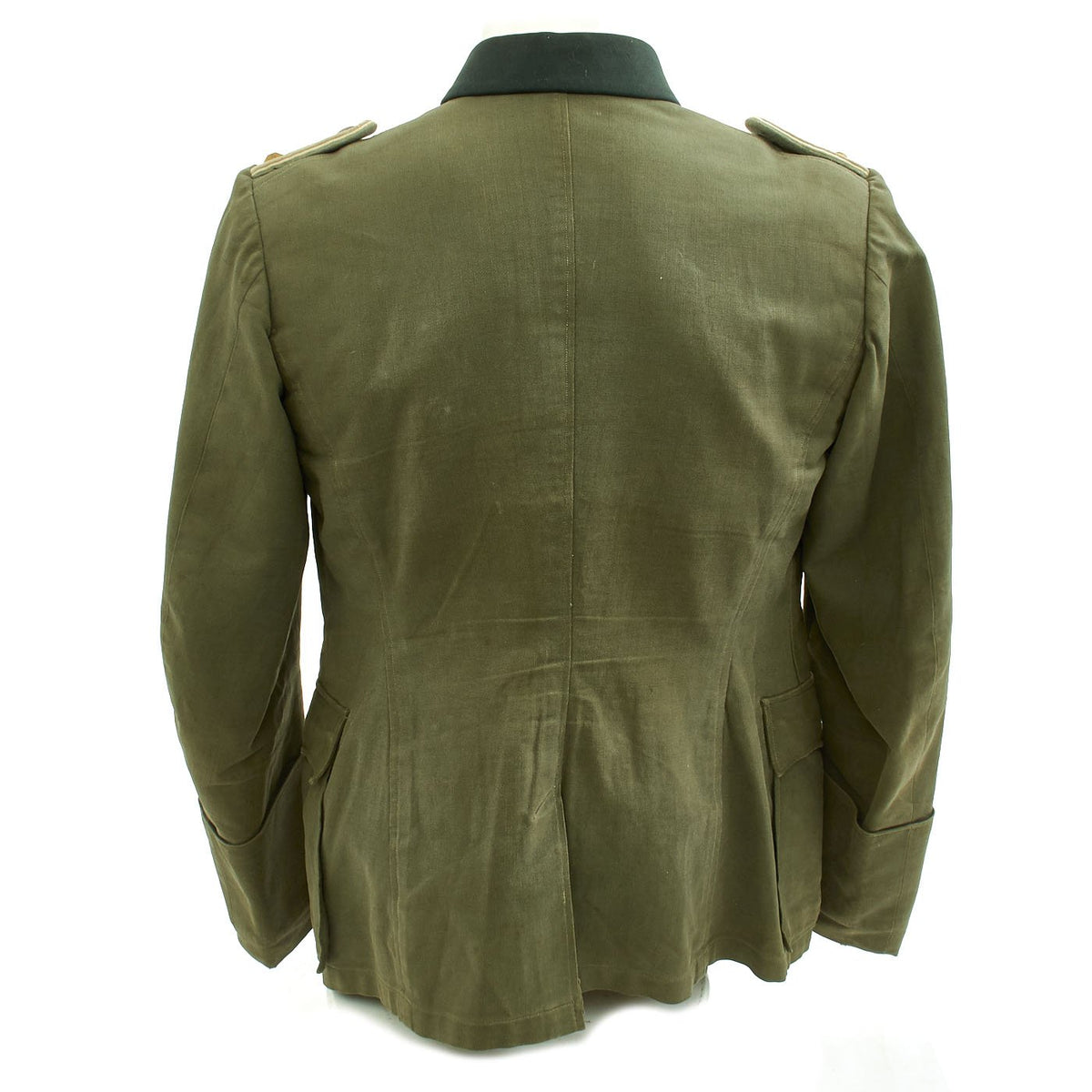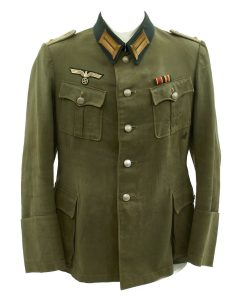Original German WWII Army Officer Oberleutnant Summer Tunic Original Items
$ 995,00 $ 248,75
Original Item: One-of-a-kind. This is a fantastic choice example of an officer battle field tunic or Summer tunic. It is cotton construction with WW2 German Army Oberleutnant (1st Lieutenant) rank shoulder boards. Officers had to supply their own uniforms, and they were usually obtained from private tailors. This beautiful tunic is no exception and bears a tailor label to the interior neck that reads H. Kestges, Dortmund. It is untouched, and in excellent overall condition. The tunic itself is made of a gray/green cotton. The front closes with five aluminum pebbled buttons with anchor rings to the reverse. The attractive Army breast eagle is hand stitched to the chest. The collar tabs are wonderful high quality thick with central bullion wire decoration and then machine stitched applied to the tunic. There is a medal ribbon bar with Iron Cross 2nd Class and Italian-German African Campaign Medal.
The officer shoulder boards each have a gold colored rank pip, indicating the rank of Oberleutnant and are neatly and tightly applied. The exterior of this officer tunic is clean and showing only very minor imperfections.
Approximate Measurements:
Collar to shoulder: 10″
Shoulder to sleeve: 25″
Shoulder to shoulder: 17.5″
Chest width: 20.5″
Waist width: 19″
Hip width: 23″
Front length: 30″
Since the heavy wool feldgrau uniform proved to be oppressively hot in summer weather, especially in southerly latitudes, soldiers took to wearing their lightweight green fatigue uniforms in the heat. In about 1942 the Army regularized the practice: depots began issuing an official hot-weather four-pocket field uniform of feldbluse cut but made of the same reed-green HBT material.
From 1935 and for the following 10 years, the German Military wore a wide selection of German Army (Heer) Uniforms. Enlisted men generally wore Army (Heer) Uniforms issued from military depots. Most enlisted soldiers wore wool trousers and a tunic with four external pockets, known as a Feldbluse (field blouse). Before the war, soldiers also were issued a walking-out tunic, with flashy insignia, called the Waffenrock. Officers wore the same general uniform styles, but as officers had to supply their own uniforms, they usually wore tailor made versions. There were also myriad varieties of specialized uniforms worn by certain units or in specific situations, from the stylish black wool “wraps” worn by crews of armored fighting vehicles, to the drab HBT work uniforms. There were tropical and summer Army (Heer) Uniforms, and camouflage smocks for combat troops. For troops operating in winter climates, there were long wool overcoats, fur clothing articles, and padded jacket and trousers sets. In 1944, a new uniform was introduced, featuring a short jacket with only two external pockets. Most but not all German Army uniform jackets bore the Heer emblem of an eagle holding a swas.
Fast Shipping with Professional Packaging
Thanks to our longstanding association with UPS FedEx DHL, and other major international carriers, we are able to provide a range of shipping options. Our warehouse staff is expertly trained and will wrap your products according to our exact and precise specifications. Prior to shipping, your goods will be thoroughly examined and securely secured. We ship to thousands clients each day across multiple countries. This shows how we're dedicated to be the largest retailer on the internet. Warehouses and distribution centres can be located throughout Europe as well as the USA.
Note: Orders with more than one item will be assigned a processing date depending on the item.
Before shipping before shipping, we'll conduct a thorough inspection of the items you have ordered. Today, the majority of orders will be delivered within 48 hours. The delivery time will be between 3-7 days.
Returns
The stock is dynamic and we cannot completely manage it because multiple stakeholders are involved, including our factory and warehouse. So the actual stock may alter at any time. It's possible that you may not receive your order once the order has been made.
Our policy is valid for a period of 30 days. If you don't receive the product within 30 days, we are not able to issue a refund or an exchange.
You can only return an item if it is unused and in the same state as the day you received it. You must have the item in its original packaging.
Related products
Uncategorized
Uncategorized
Band of Brothers ORIGINAL GERMAN WWII Le. F.H. 18 10.5cm ARTILLERY PIECE Original Items
Uncategorized
Uncategorized
Uncategorized
Australian WWII Owen MK1 Machine Carbine SMG Custom Fabricated Replica with Sling Original Items
Uncategorized
Uncategorized
Uncategorized
Uncategorized
Uncategorized
Uncategorized
Angolan Rebel 1970s era 60mm Inert Display Mortar from Angolan Civil War Original Items
Uncategorized
Uncategorized
Uncategorized
Uncategorized
Uncategorized
Uncategorized
Uncategorized
Uncategorized













































































